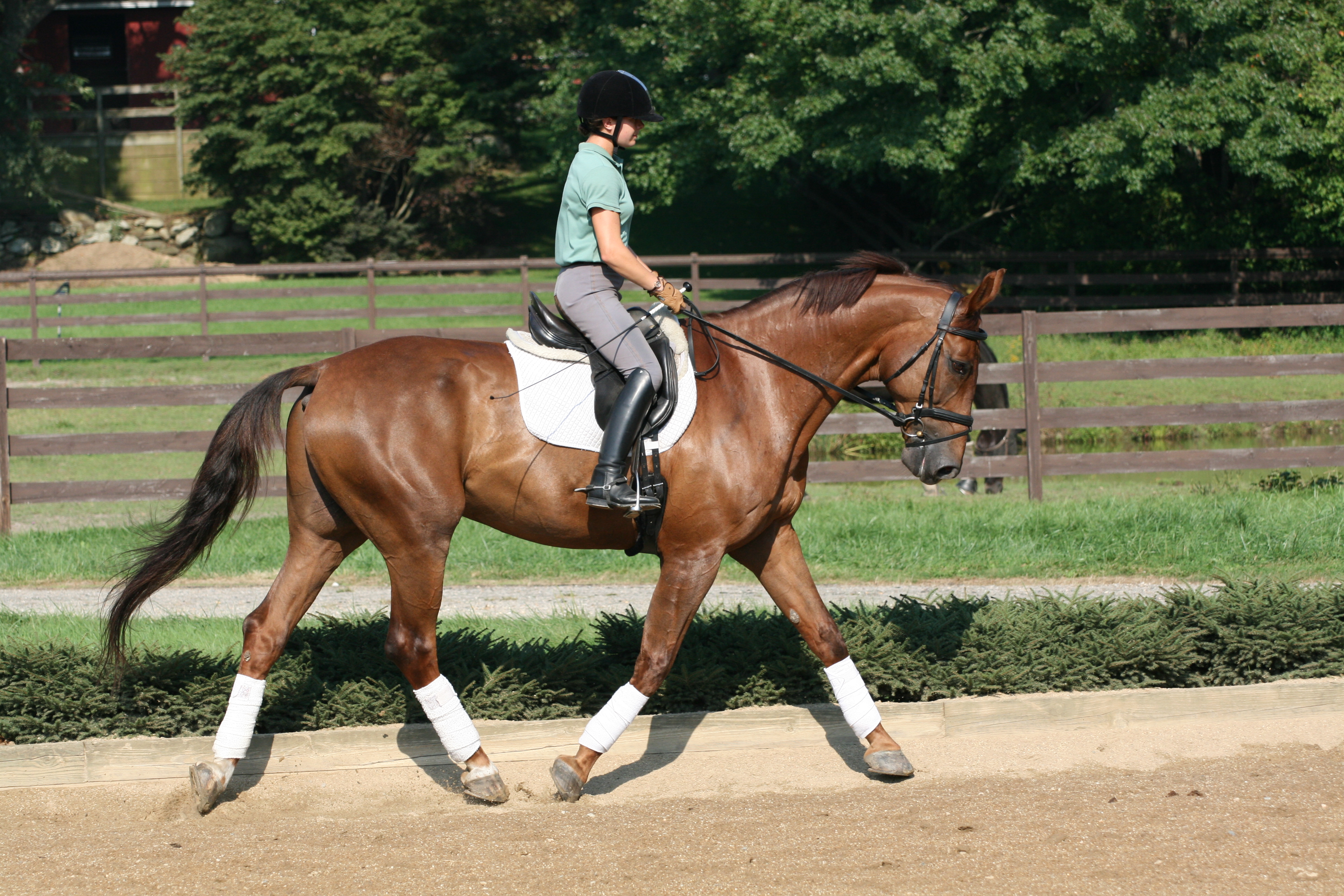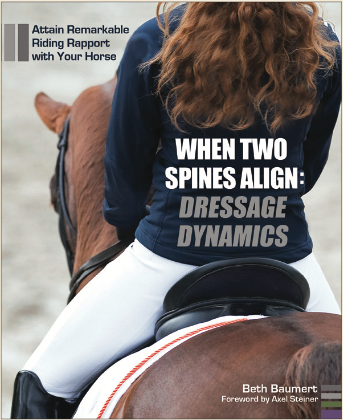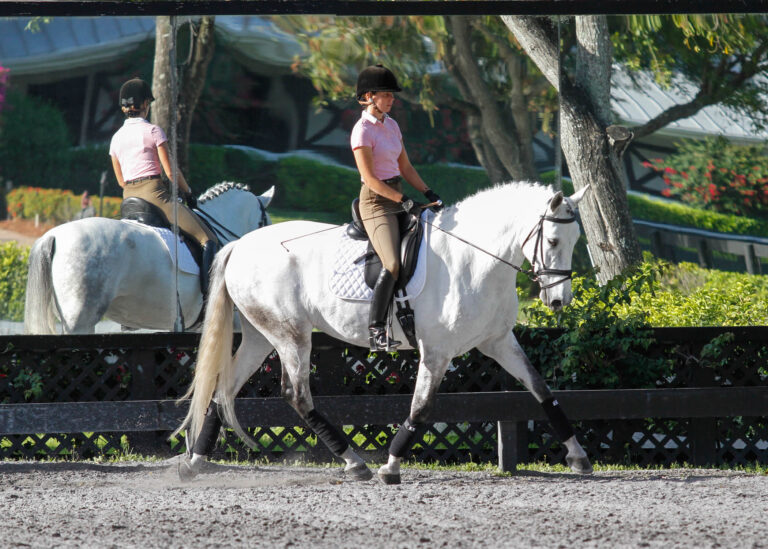If you were successful with Exercise 1, “Get Your Horse’s Pushing Engine in Gear” (Read it here), you got your horse’s pushing engine in gear and were able to steer without reins. This next exercise helps you connect your horse’s engines by doing upward and downward transitions with half-halts in shoulder-fore.
Step 1: Shorten the stride and put your horse on the aids.
Half-halt to rebalance him from behind into a shorter frame. This shorter frame invites you to shorten your reins. Channel your horse in the shape of shoulder-fore: The inside hind steps into the space between the two front legs. Keep the outside hind in alignment with the outside fore. Ride straight toward a mirror if possible so you can monitor your horse’s shape. This is difficult, so be quietly persistent.
Step 2: Do forward-and-back transitions in the walk.
Go from a free walk on the diagonal, back to a medium walk before the corner and through the short side and the next corner. Then do a free walk on the diagonal again. These transitions show your horse exactly how to respond. Ride from inside leg to outside rein in shoulder-fore, which balances him on the outside rein and helps him relax.
Step 3: Do shoulder-fore in trot and in canter. Shoulder-fore is difficult but persist quietly. When you’re successful, your horse will give it to you more readily, because he likes to be balanced too!



In her book, When Two Spines Align: Dressage Dynamics, trainer, author and Dressage Today technical editor Beth Baumert helps readers discover how to use “positive tension” and “Powerlines” to become balanced and effective in the saddle. Use of positive tension and powerlines allows the rider to be strong but still soft. In this excerpted chapter of the book, Baumert discusses the inherent balance problems that all horses face and how riders can help overcome these issues by better understanding balance.
This excerpt is used with permission from Trafalgar Square Books. The book and the DVD are available through www.EquineNetworkStore.com. To learn more, visit dressage-dynamics.com.











